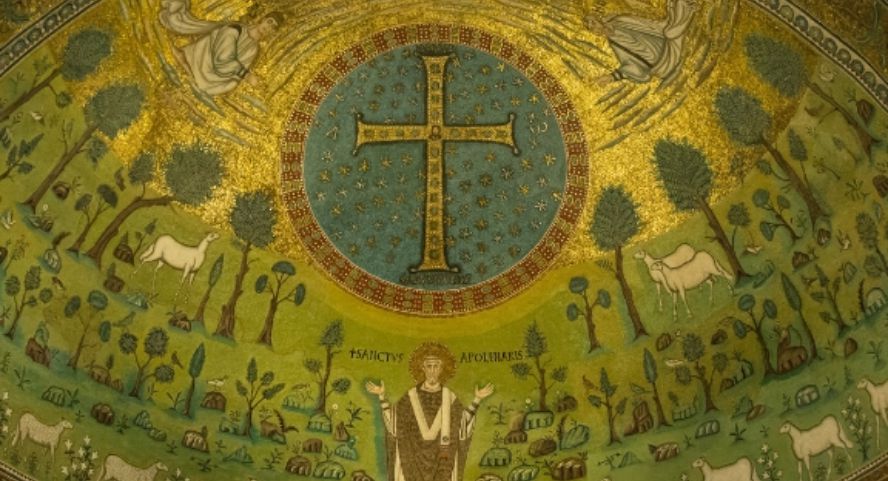The role of Nikaia as the centre of Byzantine world after 1204 AD
Jacek Bonarek
Uniwersytet Jana Kochanowskiego w Kielcach , PolandAbstract
After the turbulent events of 1204 and after gaining the power by the Latins in Constantinople, Nicaea was supposed to become the center of post-Byzantine world as the capital of a country newly created by Theodore I Laskaris. It definitely fulfilled all the conditions to become the most significant town in the north-western part of Asia Minor. The sovereigns from the Laskaris dynasty supported its development as well, although it must be emphasized that it was not the only center of their country. Next to Nicaea both Magnesia and Nymphaion need to be mentioned. Nicaea became an important cultural and scientific center of the new empire. Nevertheless, it was not an exceptional place as the distinguished representatives of Byzantine scientific and cultural world lived also permanently in other towns (also in those towns which were under the Latins’ rule). What is more, the educational system of Nicaea was criticized (e.g. George – Gregory II of Cyprus). The last but one emperor, Theodore II Laskaris (1254-1258), tried to make Nicaea the only center of Byzantine Greeks country. Nevertheless, as early as three years after his death the Byzantine Greeks regained Constantinople, the real capital of the world, and Nicaea again became the center of secondary importance.
Keywords:
Nicaea, the Laskaris dynasty, Magnesia, NymphaionReferences
Ahrweiler H., L’expérience nicéenne, DOP 29 (1975) (Crossref)
Ahrweiler H., L’histoire et la géographie de la région de Smyrne entre les deux occupations turques (1081–1317) particulièrement au XIIIe siècle, „Travaux et Mémoires” 1 (1965)
Angelov D., Imperial Ideology and Political Thought in Byzantium, 1204-1330, Cambridge 2007
Angold M., A Byzantine Government in Exile: Govern¬ment and Society under the Laskarids of Nicaea, 1204-1261, Oxford 1975
Angold M., The Fourth Crusade. Event and Context, Harlow 2003
Balard M., La Romanie génoise (XIIe-dèbut du XVe siècle, t. 1, Rzym – Genua 1978
Bonarek J., Separatyzm bizantyński w dobie IV krucjaty a działalność Teodora Laskarysa, „Piotrkowskie Zeszyty Historyczne” 9 (2008) 27-41
Bonarek J., Sytuacja Cesarstwa Bizantyńskiego w przededniu IV krucjaty, w: IV krucjata. Historia. Reperkusje. Konsekwencje, red. Z.J. Kijas – M. Salamon, Kraków 2005
Boot I., Theodore Laskaris and Paphlagonia, 1204-1214: towards a chronology description, „Archeion Pontou” 50 (2003/2004) 151-224
Bouras Ch., Houses in Byzantium, „Deltion tes Christianikes Archaiologikes Hetaireias” 11 (1982-1983) (Crossref)
Cheynet J.-C., Philadelphie, un quart de siècle de dissidence, 1182-1206, w: Philadelphie et autres études, Paris 1984, 39-54 (Crossref)
Cheynet J.-C., Pouvoir et contestations à Byzance, Paris 1996 (Crossref)
Concina E., La città bizantina, Roma – Bari 2003
Constantinides C.N., Higher education in Byzantium in the Thirteenth and early Fourteenth centuries (1204-ca.1310), Nicosia 1982
Foss C., Emperors named Constantine, „Revue Numismatique” 6 (2005) 90-99 (Crossref)
Foss C. – Scott J.A., Sardis, w: The Economic History of Byzantium, ed. A.E. Laiou, t. 2, Washington 2002
Foss C. – Tulchin J., Nicaea: a Byzantine capital and its praises: with the speeches of Theodore Laskaris, In praise of the great city of Nicaea, and Theodore Metochites, Nicene oration, Brookline 1996
Geanakoplos D.J., Emperor Michael Palaeologus and the West 1258-1282: A Study in Byzantine-Latin Relations, Cambridge 1959
Georgius Acropolites, Historia, ed. A. Heisenberg, P. Wirth, w: Georgius Acropolites, Opera, t. 1, Stuttgart 1978
Georgius Pachymeres, Relationes historicae, ed. A. Failler – V. Laurent, CFHB 24/1: Series Parisiensis, t. 1, Paris 1984
Godfrey J., 1204. The Unholy Crusade, Oxford 1980
Gotfryd de Villehardouin, La conquête de Constantinople par Geoffroi de Ville-hardouin avec la continuation de Henri de Valenciennes 455, ed. M. Natalis de Wailly, Paris 1872, tłum, Z. Pentek: Geoffroy de Villehardouin, Zdobycie Konstantynopola, Poznań 2003
Haldon J., Bizancjum. Zarys dziejów, tłum. Z. Simbierowicz, Warszawa 2006
Hendy M.F., Studies in Byzantine Monetary Economy, c. 300-1450, Cambridge 1985 (Crossref)
Janin R., Nicée. Étude historique et topographique, EO 28 (1925) 482-487 (Crossref)
Kiourtzian G., L’époque protobyzantine à travers les monuments épigraphiques, w: La Bithynie au Moyen Âge, ed. B. Geyer – J. Lefort, Paris 2003
Krupczyński P., Nikea, w: Encyklopedia kultury bizantyńskiej, red. O. Jurewicz, Warszawa 2002
Lampsidis O., La rivalité entre l’état de Grands Comnènes et celui de Nicée à propos de l’héritage de l’idée byzantine, w: Actes du XVe Congrès International d’Études Byzantines, Athènes, septembre 1976, t. 4, Athènes 1980
Lau¬rent V., La chronologie de patriarches de Constantinople au XIIIe siècle, REB 27 (1969) (Crossref)
Leszka M.J., Nicea – tymczasowa stolica Bizantyńczyków, „Piotrkowskie Zeszyty Historycz-ne” 12/2 (2011) 211-220
Macrides R., Introduction, w: George Akropolites, The History, ed. R. Macrides, Oxford 2007
Michael Choniates, Epistulae, ed. F. Kolovou, Corpus Fontium Historiae Byzantinae (= CFHB) 41: Series Berolinensis, Berlin – New York 2001
Mitsiou E., The monastery of Sosandra: a contribution to its history, dedication and localisation, „Bulgaria Medievalis” 2 (2011) 665-684
Mondrain B., Życie umysłowe, w: Świat Bizancjum, t. 3: Bizancjum i jego sąsiedzi 1204-1453, red. A. Laiou – C. Morrisson, tłum. A. Graboń, Kraków 2013
Morrisson C., Czwarta wyprawa krzyżowa i nowa organizacja polityczna (1204-1258), w: Świat Bizancjum, t. 3: Bizancjum i jego sąsiedzi 1204-1453, red. A. Laiou – C. Morrisson, tłum. A. Graboń, Kraków 2013
Nicephorus Blemmydes, Curriculum vitae et carmina, ed. A. Heisenberg, Leipzig 1896
Νicephorus Gregoras, Byzantina historia, ed. L. Schopen, Corpus Scriptorum Historiae Byzantinae (= CSHB) 19/1, Bonn 1829
Nicetas Choniates, Historia, ed. J.A. van Dieten, CFHB 11: Series Berolinensis, Berlin – New York 1975
Nicetas Choniates, Orationes et epistulae, ed. J.A. van Dieten, CFHB 3: Series Berolinensis, Berlin – New York 1972
Nikefor Blemmydes, Autobiographia sive Curriculum Vitae necnon Epistula Universalior, ed. J.A. Munitiz, CCG 13, Turnhout – Leuven 1984
Orgels P., Sabbas Asidénos, dynaste de Sampsôn, „Byzantion” 10 (1935) 67-80
Ostrogorsky G., Geschichte des Byzantinischen Staates, München 1963
Patlagean É., Un Moyen Âge grec. Byzance IXe-XVe siècle, Paris 2007
Pentek Z., Cesarstwo Łacińskie 1204-1261. Kolonialne państwo krzyżowców czy Neobizancjum?, Poznań 2004
Pérez Martín I., À propos des manuscrits copiés par George de Chypre (Grégoire II), patriarche de Constantinople (1283-1289), „Scriptorium” 46 (1992) (Crossref)
Theodorus Scutariotes, Synopsis chronike, w: Messaionike Bibliotheke, ed. K.N. Sathas, t. 7, Paris 1894
Uniwersytet Jana Kochanowskiego w Kielcach
License
Papers published in Vox Patrum are covered by the Attribution-NoDerivatives 4.0 International (CC BY-ND 4.0) licence. Authors and users can use published works licensed under the CC-BY-ND since 2018. For earlier publications, copyrights are available under fair use rights in accordance with the Act of February 4, 1994 on copyrights and related rights.







